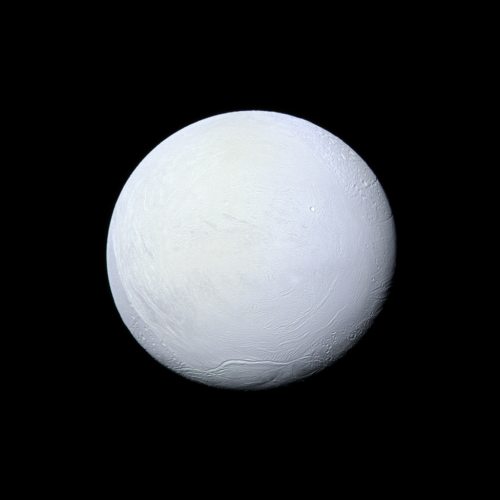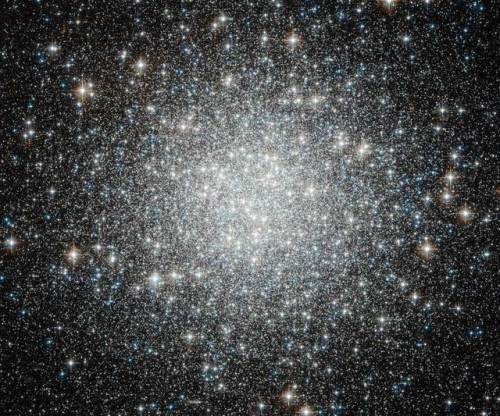Lunar Eclipse 2019

Lunar Eclipse 2019
Image Credit: Zachary Wells
More Posts from Riekod and Others

Saturn’s moon Enceladus, covered in snow and ice, resembles a perfectly packed snowball in this image from NASA’s Cassini mission.
Image credit: NASA/JPL-Caltech/Space Science Institute

This image shows something spectacular: a massive galaxy cluster that it is warping the space around it! The cluster, whose heart is at the centre of the frame, is named RCS2 J2327, and is one of the most massive clusters known at its distance or beyond.
Massive objects such as RCS2 J2327 have such a strong influence on their surroundings that they visibly warp the space around them. This effect is known as gravitational lensing. In this way, they cause the light from more distant objects to be bent, distorted, and magnified, allowing us to see galaxies that would otherwise be far too distant to detect.
Credit: ESO, ESA/Hubble & NASA







Amazing views from the International Space Station (ISS)
If you’ve ever watched water running down the side of the street, you’ve probably noticed that it doesn’t flow smoothly. Instead, you’ll see waves, rivulets, and disturbances that form. That’s because the simple action of flowing down an incline is unstable. Water and other viscous liquids can’t flow downhill smoothly. Any disturbances – an uneven surface, the rumble of passing cars, a pebble in the way – will create a disruption that grows, often until the entire flow is affected. This video shows some of the complex and beautiful patterns you get then. (Video and image credit: G. Lerisson et al.)



As I get older I’m finding that a lot of the “intellectuals” I used to admire are actually just condescending and pretentious. And also realizing how much more important it is to be present, considerate, and empathetic because nobody really knows what they’re talking about and anyone who claims to know everything about anything is feeding you bs.

Blue Straggler Stars in Globular Cluster M53
Image Credit: ESA/Hubble, NASA


Cloud Chambers: Visualizing Radiation
The cloud chamber, also known as the Wilson chamber, is a particle detector used for detecting ionizing radiation.
In its most basic form, a cloud chamber is a sealed environment containing a supersaturated vapor of water or alcohol. When a charged particle (for example, an alpha or beta particle) interacts with the mixture, the fluid is ionized. The resulting ions act as condensation nuclei, around which a mist will form (because the mixture is on the point of condensation).
The high energies of alpha and beta particles mean that a trail is left, due to many ions being produced along the path of the charged particle. These tracks have distinctive shapes, for example, an alpha particle’s track is broad and shows more evidence of deflection by collisions, while an electron’s is thinner and straight. -(x)
More science and gifs on my blog: rudescience Gif made from: This video by The Royal Institution References: (x), (x).









What Will Happen When Betelgeuse Explodes?
“Every star will someday run out of fuel in its core, bringing an end to its run as natural source of nuclear fusion in the Universe. While stars like our Sun will fuse hydrogen into helium and then – swelling into a red giant – helium into carbon, there are other, more massive stars which can achieve hot enough temperatures to further fuse carbon into even heavier elements. Under those intense conditions, the star will swell into a red supergiant, destined for an eventual supernova after around 100,000 years or so. And the brightest red supergiant in our entire night sky? That’s Betelgeuse, which could go supernova at any time.”
One of the most sobering cosmic truths is that every star in the Universe will someday run out of fuel and die. Once its core fuel is exhausted, all it can do is contract under its own gravitational pull, fusing heavier and heavier elements until it can go no further. Only the most massive stars, capable of continuing to fuse carbon (and even heavier elements) will ever create the Universe’s ultimate cataclysmic event: a Type II, or core collapse, supernova. Stars that are fusing carbon (and up) appear to us today as red supergiants, and the brightest red supergiant as seen from Earth is Betelgeuse. Sometime in the next 100,000 years or so, Betelgeuse will go supernova. When it does, it will emit incredible amounts of radiation, become intrinsically brighter than a billion suns and and be easily visible from Earth during the day. But that’s not all.
What’s the full story on what will happen when Betelgeuse goes supernova? Come get the science today!

Omega Centauri.
Credit: Maicon Germiniani

the InSight landing was so exciting!
~ november 26, 2018
-
 lunarian-queen reblogged this · 3 weeks ago
lunarian-queen reblogged this · 3 weeks ago -
 unsuredefleur liked this · 1 month ago
unsuredefleur liked this · 1 month ago -
 luminousluciano liked this · 1 month ago
luminousluciano liked this · 1 month ago -
 annita89t7pzmjcsh liked this · 6 months ago
annita89t7pzmjcsh liked this · 6 months ago -
 beluosus liked this · 1 year ago
beluosus liked this · 1 year ago -
 erichidalgocartoonistart liked this · 1 year ago
erichidalgocartoonistart liked this · 1 year ago -
 somethignpoetsomethingsomething liked this · 1 year ago
somethignpoetsomethingsomething liked this · 1 year ago -
 catherinebronte reblogged this · 1 year ago
catherinebronte reblogged this · 1 year ago -
 catherinebronte liked this · 1 year ago
catherinebronte liked this · 1 year ago -
 legendarykidherringsludge reblogged this · 1 year ago
legendarykidherringsludge reblogged this · 1 year ago -
 legendarykidherringsludge liked this · 1 year ago
legendarykidherringsludge liked this · 1 year ago -
 kiss-my-arsenic reblogged this · 1 year ago
kiss-my-arsenic reblogged this · 1 year ago -
 kiss-my-arsenic liked this · 1 year ago
kiss-my-arsenic liked this · 1 year ago -
 shannybangbang liked this · 1 year ago
shannybangbang liked this · 1 year ago -
 higanbana-black reblogged this · 2 years ago
higanbana-black reblogged this · 2 years ago -
 blessedlilith reblogged this · 2 years ago
blessedlilith reblogged this · 2 years ago -
 a-wee-batty-batbrat reblogged this · 2 years ago
a-wee-batty-batbrat reblogged this · 2 years ago -
 thesesixseeds reblogged this · 2 years ago
thesesixseeds reblogged this · 2 years ago -
 thesesixseeds liked this · 2 years ago
thesesixseeds liked this · 2 years ago -
 goth-cutie reblogged this · 2 years ago
goth-cutie reblogged this · 2 years ago -
 laconic-nightmares reblogged this · 2 years ago
laconic-nightmares reblogged this · 2 years ago -
 vlotenia reblogged this · 2 years ago
vlotenia reblogged this · 2 years ago -
 princessmorningstar reblogged this · 2 years ago
princessmorningstar reblogged this · 2 years ago -
 inbetweendreamsandreality21 liked this · 2 years ago
inbetweendreamsandreality21 liked this · 2 years ago -
 ocsasiad reblogged this · 2 years ago
ocsasiad reblogged this · 2 years ago -
 ocsasiad liked this · 2 years ago
ocsasiad liked this · 2 years ago -
 amadnessofwords liked this · 2 years ago
amadnessofwords liked this · 2 years ago -
 mortuariemuse liked this · 2 years ago
mortuariemuse liked this · 2 years ago -
 giovannikalashnikov liked this · 2 years ago
giovannikalashnikov liked this · 2 years ago -
 spac3witch liked this · 2 years ago
spac3witch liked this · 2 years ago -
 gagemordrake reblogged this · 2 years ago
gagemordrake reblogged this · 2 years ago -
 gagemordrake liked this · 2 years ago
gagemordrake liked this · 2 years ago -
 thisacidreign liked this · 2 years ago
thisacidreign liked this · 2 years ago -
 b-elphegor reblogged this · 2 years ago
b-elphegor reblogged this · 2 years ago -
 obscuridadeterna reblogged this · 2 years ago
obscuridadeterna reblogged this · 2 years ago -
 obscuridadeterna liked this · 2 years ago
obscuridadeterna liked this · 2 years ago -
 bandgirl365 reblogged this · 2 years ago
bandgirl365 reblogged this · 2 years ago -
 fanaatica reblogged this · 2 years ago
fanaatica reblogged this · 2 years ago -
 vampyrahhh liked this · 2 years ago
vampyrahhh liked this · 2 years ago